It can be very profitable to grow corn (maize) commercially because prices have been fairly high in recent years and corn is a high yield crop. Unfortunately, it is also a costly crop to grow when you take into account the cost of seed corn, chemicals and fertilizers necessary to produce top yields. Corn can also be very labor-intensive in that it requires a great deal of crop management.
In this article, we provide an overview of the commercial production of sweet corn. Home gardeners will also find the information contained in this article useful. Read on to learn more on how to grow corn commercially.
What You'll Learn Today
- Begin By Understanding Genetics And Breeding
- Create A Diverse Collection
- Good Crop Management Practices Lead To Success
- Smart Seed Purchase Saves You Money
- Establish The Ideal Environment For Your Crops
- Establish A Sound Management Plan
- Weed Management
- Pest Management
- Manage Corn Diseases
- Handle Your Harvest
- Pre-Sell Your Corn!
- Frequently Asked Questions
- Other Resources
Begin By Understanding Genetics And Breeding
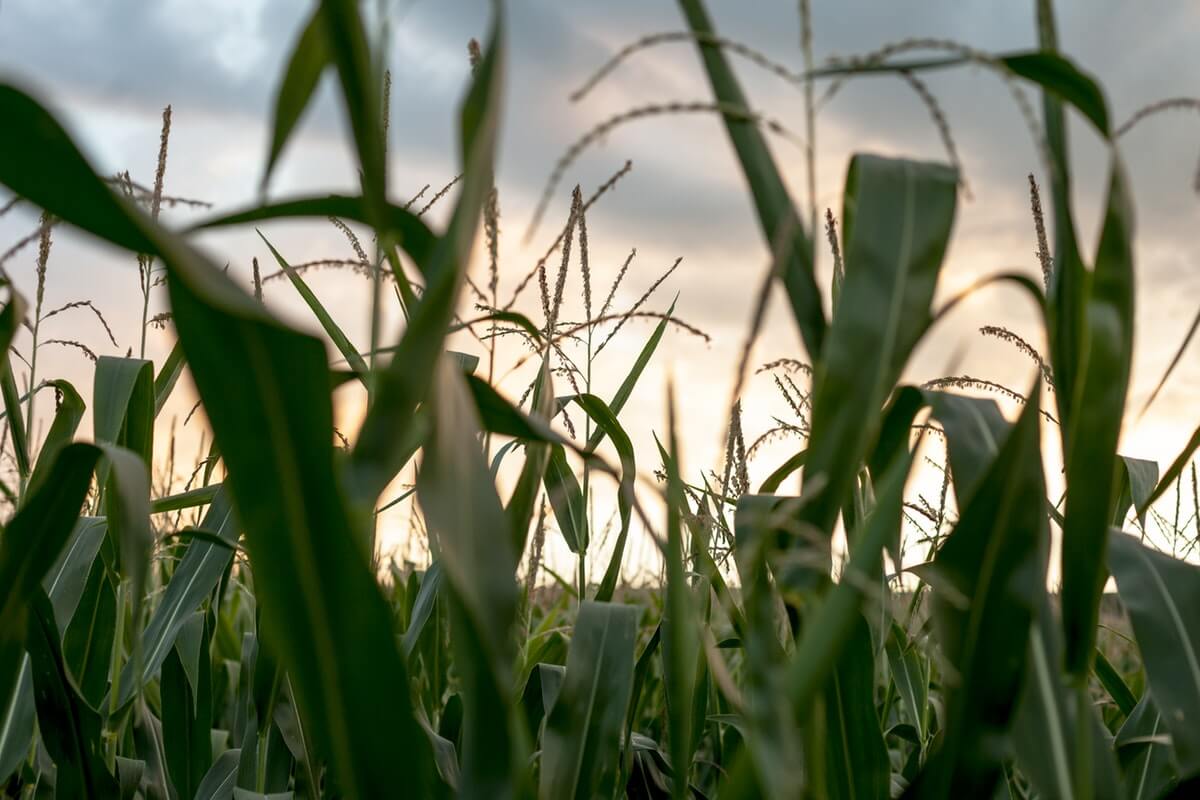
Almost all varieties of sweet corn are hybrids, and modern hybrids are usually one of two types, fresh market or processing corn.
To get the best yields, you must choose the right hybrid corn to suit your purpose and the ideal planting dates in your region.
If you’re a fresh market producer, you’ll need to choose a hybrid that matures in time for the spring and summer market and that possesses qualities that buyers desire.
Hybrids are available in yellow, white and bicolor varieties. Generally speaking, yellow market corn is most popular; however, white corn tends to be more popular in the southern United States, and yellow corn tends to be more popular in the eastern states.
If you’re a dairy producer, you’ll need a processing hybrid that will mature in coordination with the date when you will need a good silage crop.
It is possible to find a hybrid that is suitable to both processing and fresh market. These are mostly yellow corn.
Other considerations to keep in mind when choosing hybrids include:
- Transgenic qualities relate to whether the corn has been genetically altered by the introduction of DNA from unrelated organisms. Transgenic options may have traits that provide disease and insect resistance, and this can be very helpful to the farmer. Even so, you’ll need to consider how this might affect the salability of your corn in your area as some consumers are opposed to genetic modification in foods.
- Grain drydown refers to whether the corn will mature quickly enough to dry down into grain corn while it is still in the field, before the first frost. If not, you’ll need to have ample storage facilities to allow your harvested crop to dry without danger of mold or mildew.
- Early-season vigor rating refers to how quickly and well a particular hybrid starts.
- Disease and pest tolerance indicates how resistant a given hybrid will be to diseases and pests that are common in your region.
- Rate of maturity indicates the length of time you will need to wait before first harvest.
- Stalk quality and standability refer to the strength of the plants to withstand adverse weather conditions such as high winds.
Create A Diverse Collection
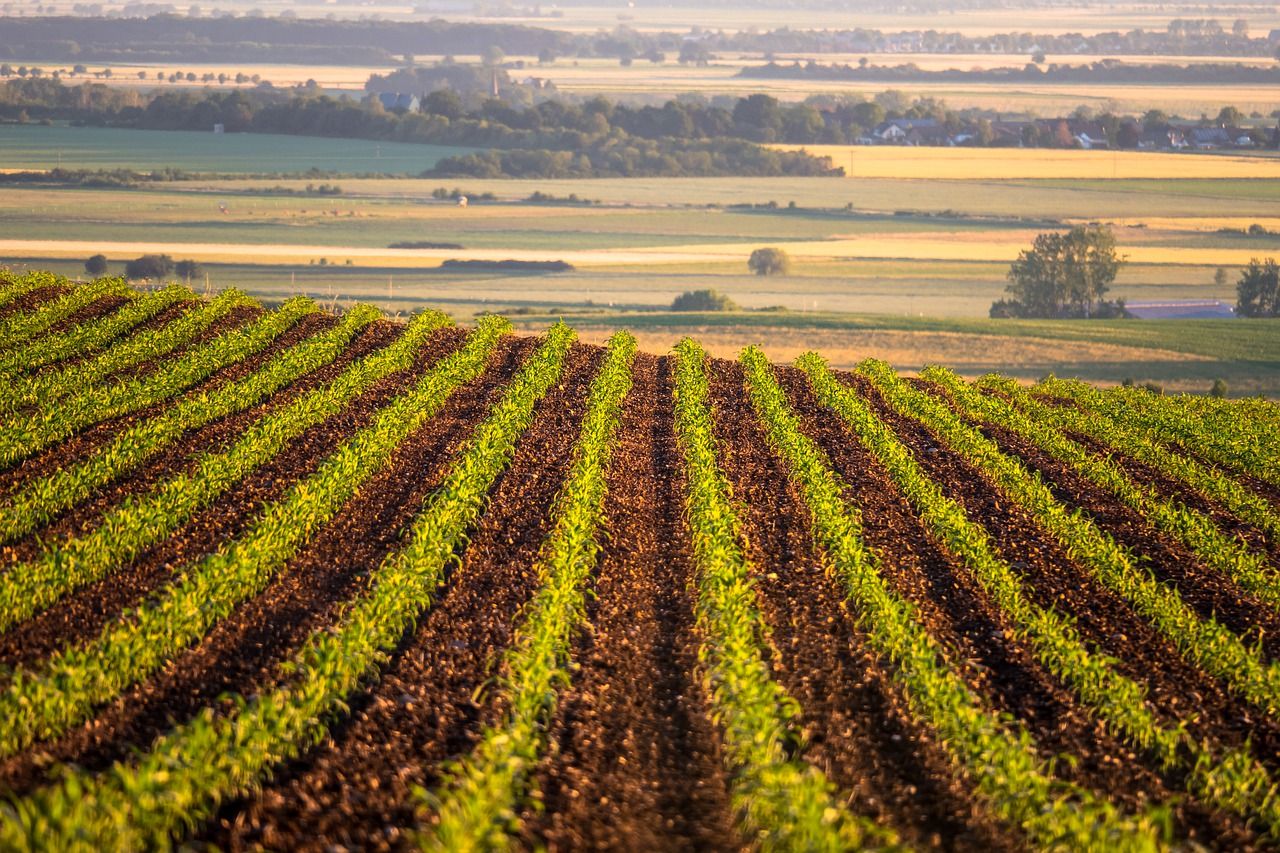
It’s a good idea not to put all your eggs in one basket. In this case, this means choosing an eclectic collection of hybrids with different strengths. By doing so, you minimize your risk of crop loss and failure.
Create diversity in your crop with a collection of high-yielding hybrids which differ in traits such as:
- Disease Resistance
- Rate of Maturity
- Pest Resistance
The practice of planting a diverse collection of hybrids spreads out the dates of maturity, and this spreads out the key stages of production, such as pollination.
This will have the end result of making your workload lighter as you will have smaller tests to perform throughout the growing season rather than having blocks of very heavy work days.
For example, if you make the mistake of planting a mono-crop of all one sort of corn, and you have many acres, you may find yourself working very hard during the single week when all your plants need your attention for pollination. For more on this see our article on how corn is pollinated.
Just keep in mind when choosing your hybrid collection that high yield is the most important quality, and every hybrid you choose should be a high-yielding variety.
Look to the most modern hybrid varieties for the highest yield. Some good sources of information in this regard include:
- Seed Company Trials
- Public Hybrid Trials
- University Trials
- Retailer Trials
You may also wish to talk with other farmers in your area. Talk with your local county agent and co-op representatives.
Become a member of local future farming organizations for good networking and information sharing.
Hybrid Corn Breeding
Good Crop Management Practices Lead To Success
When you’re choosing the type of hybrids you want to plant, take your own farm management practices into account.
Different types of hybrids respond in various ways to crop management practices. Learning which sorts will do best for you and the way you operate will take a bit of research as described above.
You must also be careful not to plant the same hybrids in the same location year after year. When you do this, it helps pests develop resistance to the built in pest resistance of the hybrids.
Rotate the types of corn you plant in your fields from one year to the next.
Every three years, give each field a break by planting an entirely different sort of crop to help rejuvenate the soil. Some good choices for crop rotation include:
- Spring Barley
- Red Clover
- Soybeans
- Wheat
- Oats
- Cotton (in certain areas)
Think about what types of pest management you wish to employ and choose your hybrids accordingly.
When you choose transgenic varieties with pest, fungus or disease resistant qualities, you are killing two birds with one stone.
These varieties could save you a great deal of money in terms of the chemicals needed to keep your crops safe and protected.
Corn School – Cost Of Production
Smart Seed Purchase Saves You Money
Of course the cost of your seed corn is another important factor in making your choices. Research seed companies to find out which ones will offer you discounts for the quantity of seed you need to purchase.
You’ll also find that some companies provide good discounts for early payment. Be sure to research and understand all of these opportunities well in advance so that you can be prepared.
Keep in mind also that treated seed is protected against soil dwelling pests and soil borne diseases. This is another important consideration that can save you money and ensure a high yield.
Seed size and uniformity are also important considerations when choosing seed. Larger seeds tend to produce more vigorous plants, seeds all of the same size work best when using mechanized precision seeding equipment.
Establish The Ideal Environment For Your Crops
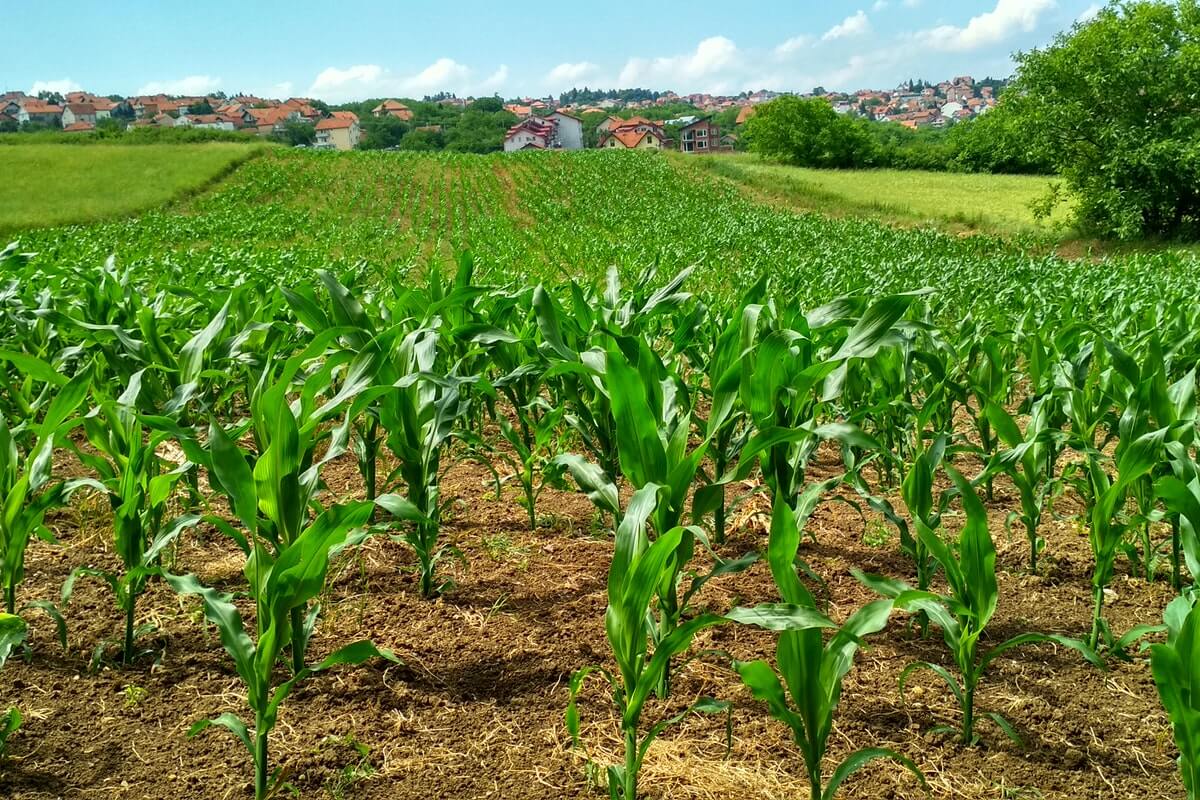
Of course no amount of good seed selection will make up for a poor planting environment. Naturally, you’ll need to be certain that you have the right conditions to grow healthy corn. Here are the basics:
1. Sunlight
Corn can grow successfully in the northern United States or in the southern United States, but you have to choose the right variety to suit the amount of sunlight you get in your location. In the northern states, you’ll want an early maturing variety that is adapted to thrive during long, cool days in summer.
Varieties of corn that are intended to be grown in the Southern United States do better with shorter, warmer summer days.
If you try to plant these varieties in the northern states, they will not mature until the short days of autumn arrive.
Instead, they’ll simply keep growing taller without producing any corn and then they’ll be killed by the first frost.
2. Temperature
No matter where you are, your corn will not grow unless the temperature is at least 50°F. The best temperatures for growing sweet corn are between 75° to 86°F.
You need to have warm days and cool nights because hot temperatures at night increase corn respiration and decrease photoassimilates, which are biological compounds that allow the plant to store the energy produced by photosynthesis.
3. Water
Corn is a thirsty plant, and it needs consistent moisture throughout the growing season. The soil must be at least slightly moist for germination to initially occur. For more on germination, see our article.
During the plants’ critical growth periods, when they are producing tassels and silk for pollination, and during ear fill when the corn kernels are being produced, corn requires a great deal of moisture.
You’ll need to determine whether or not your natural rainfall will provide all the moisture needed for a good crop. If not, you must devise an adequate irrigation system to meet your plants’ needs.
4. Soil
Even though corn is a thirsty plant, it cannot tolerate standing in water. You’ll need to evaluate your soil carefully and amend it as needed to make sure that it is light, airy and well draining.
Soil that is excessively light with too much sand will need a lot of water. Soil that is too heavy with excessive clay content will need a great deal of tilling and amendment.
Getting the right balance can be tricky because soil that is too light and airy will allow nitrogen to escape or be leached away.
You’ll want to add plenty of organic compost to the soil to provide both lightness and water retaining capabilities.
You should also test the pH level of the soil and make sure that it is between 5.8 and 6.5. If the pH level is lower than 5.8, you should add lime.
5. Fertilizer
To determine what sort of fertilizer you’ll need, you must begin with soil testing. Talk with your local County extension office to get help with this.
Generally speaking, corn needs the following:
Nitrogen
This nutrient is needed in abundance by all plants for proper leaf development and good photosynthesis.
Managing nitrogen content of the soil in a cornfield can be very tricky because nitrogen can be lost into the air or washed away by heavy rains.
This has a negative impact both on your crop and on the water table.
To avoid this, it’s best to provide nitrogen through the use of natural, organic means rather than chemical means.
You can do this by rotating your crops with legumes, such as soybeans, clover or alfalfa. You can also use manure as a natural organic fertilizer. Nitrogen content varies depending on the type of manure used.
Potassium And Phosphorus
You can determine how much potassium and phosphorus your soil needs by performing standard testing.
If you determine that you already have a fairly high amount of potassium and phosphorus in your soil, you can simply give your young corn plants a banded application of fertilizer at a low rate during cool weather.
This type of application is more efficient than a broadcast application.
If you determine that the rates of potassium and phosphorus in your soil are quite low, you’ll need to use broadcast application.
Micronutrients
Most soil already contains enough micronutrients for corn planting, but as with any other nutrient excessive planting year after year can eventually deplete these levels. The necessary micronutrients include:
- Molybdenum
- Manganese
- Chlorine
- Copper
- Boron
- Iron
- Zinc
Sweet corn especially needs zinc, and if your soil pH level is higher than 7.0, the soil may be zinc deficient.
Other soil conditions that can cause zinc deficiency include high levels of phosphorus or excessive amounts of sand in the soil.
If your soil tests low for zinc, you’ll need to provide your plants with a banded application of this micronutrient.
Establish A Sound Management Plan
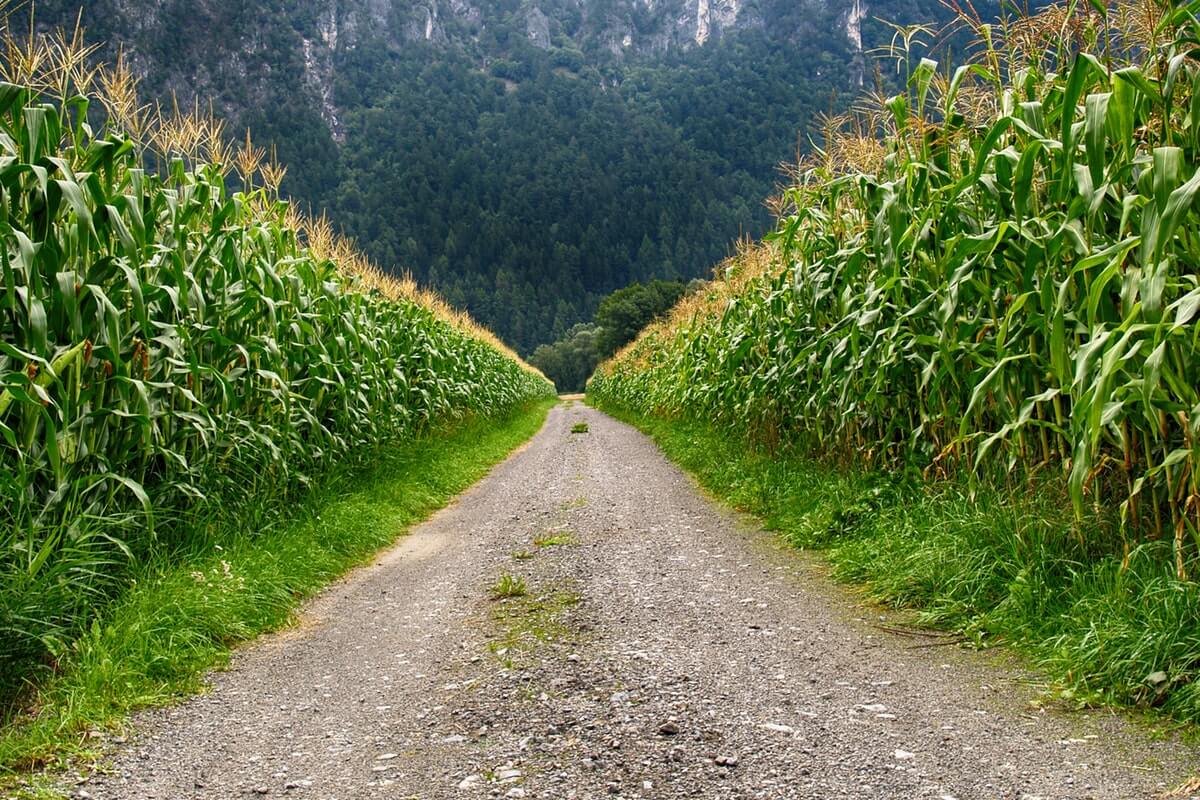
Of course you will not just plant your corn once and harvest it once. To grow corn successfully, commercially you must create a planting plan that allows you to harvest almost continuously throughout the growing season.
To do this, you’ll need to take all of your resources into account. Some considerations include the growing condition, the traits of your various cultivars and the predicted weather.
As you create your planting plan, think about how far apart you’ll want to plant your seeds for the greatest production and the greatest ease of care and cultivation.
Generally speaking, you can get the most corn by placing your rows between 28 inches and 32 inches apart. Seeds should be spaced 7 inches to 8 inches apart. This will result in 24,000 plants on each acre of land planted.
If you are growing corn with very large ears, the rows should be farther apart (e.g. 36 inches). You should space your seeds 6.5 inches to 7.5 inches apart. This will result in between 20,000 and 23,000 plants per acre planted.
For more on row and plant spacing see our article.
Strive for uniformity in seedling emergence and in stalk growth because ears of varying sizes complicate harvest and make it necessary for you to spend a lot of time sorting the ears according to size before packaging them.
Weed Management
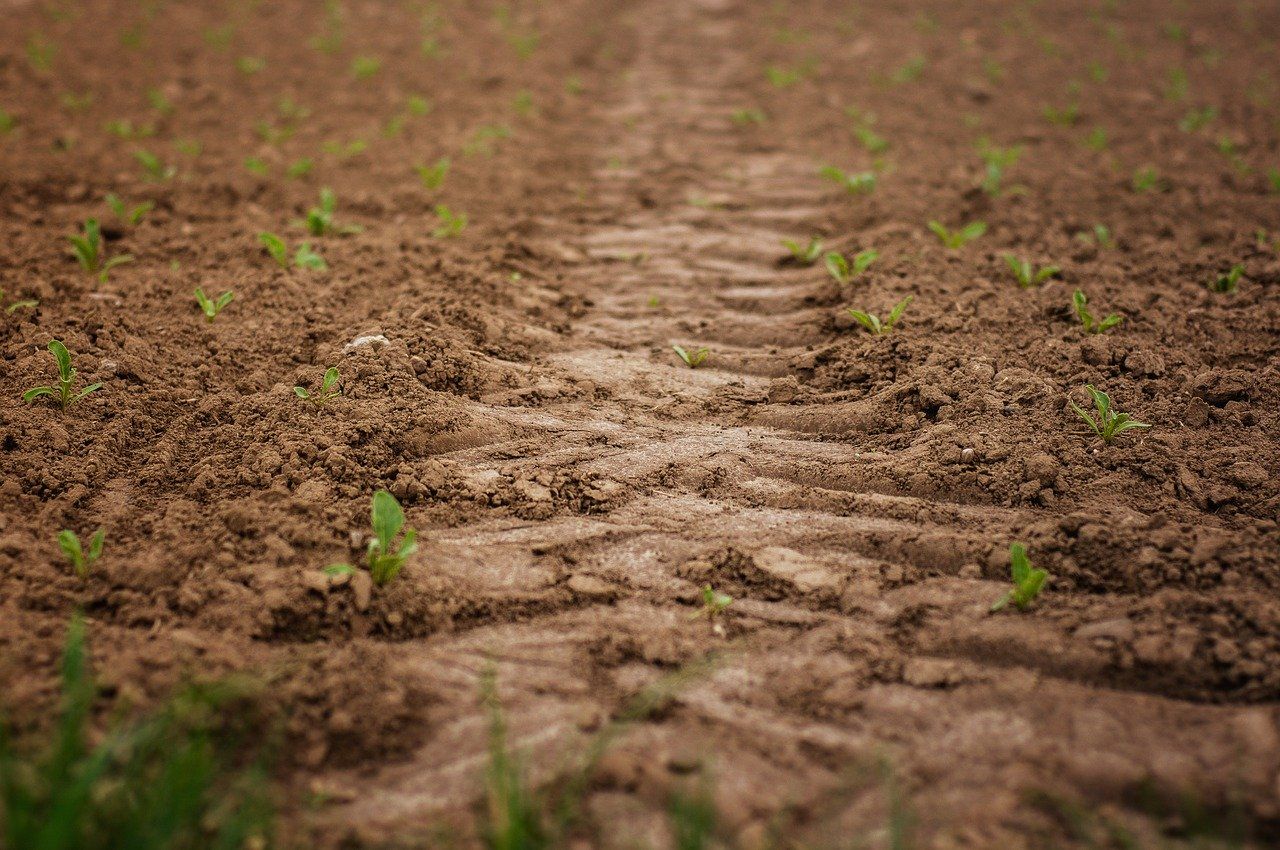
When you’re determining how far apart you want space your corn, you’ll also want to keep in mind that the wider apart your rows are, the more weeds will be encouraged to grow.
Closer planting helps eliminate the need for weed cultivation (tilling open rows to discourage weeds) because the corn plants block the light needed by weeds to survive.
For more on cultivation, see our article on planting corn with a tractor.
The use of herbicides also helps reduce the need for cultivation. In the long-term, reduced cultivation saves you money and benefits the planet because of the reduced use of fossil fuels.
There are three categories of herbicides you can choose from for use with corn. They are:
- Pre-planting: These treatments are applied to the soil before planting the corn. Some treatments are intended to be used on the surface of the soil. Others are intended to be tilled in.
- Pre-emergence: These treatments are applied after planting corn but before the corn or weeds germinate and emerge from the ground.
- Post emergence: These treatments are applied after corn (and weeds) have emerged. This sort of treatment is best applied before weeds get too big.
Pest Management
There are over fifty species of pest insects that can cause a great deal of damage to your sweet corn crop. Depending on your location, your crop could be decimated by foliar pests, ear worms and/or soil dwelling pests.
Insect Pests Of Corn
Pests you should watch out for and be prepared for include:
- Corn Root Worms
- Corn Leaf Miners
- Corn Earworm
- Army Worms
- Spider Mites
- Cinch Bugs
- Wireworms
- Cut Worms
- Soil Grubbs
- Web Worms
- Stem Borers
- Leaf Beetles
- Flea Beetles
- Nematodes
- Aphids
- Thrips
While it may be tempting to drench your crop and your soil with pesticides, this is not the most economical or the wisest way of dealing with pests.
Strong chemical pesticides negatively impact the air, soil and water. They are just as devastating to beneficial insects as they are to the pests you wish to get rid of, and in the long run, pests are incredibly resilient and tend to become accustomed to any chemicals you throw at them.
That’s why integrated pest management (IPM) for corn is the best way to go when dealing with pest insects.
That is also why the national corn growers Association has gone into partnership with the honeybee health coalition to publish Best Management Practices (BMP) documents relating to the health of the honeybee population and good corn management.
The best management practices development team consisted of beekeepers and corn growers who understand just how essential it is for these two businesses to work hand-in-hand.
Manage Corn Diseases

Good overall management practices and providing your corn with the right environment for health and growth will go far toward avoiding diseases.
Poor care and management or conditions out of your control, such as excessive rain, wild temperature fluctuations and the like can cause corn to be susceptible to parasitic infestations and/or fungal, bacterial or viral infections.
The prevalence of any given disease problems varies from location to location. A good overall reference to help with the identification of corn diseases this book.
Some of the diseases you may encounter include:
- Damping off is a fungal infection caused by several different types of fungi. It can cause stem rotting at the soil line, yellowing and wilting of the leaves and plant death. These fungal diseases are more likely when the soil is very wet and temperatures are low (50° to 55°F).
- Stalk rot and root rot may be caused by fungus or bacteria. These types of infections are more likely in extended times of wet weather. Excessive nitrogen fertilization can also cause this problem. Overcrowding of plants contributes to the factors that may cause stalk and root rot.
- Leaf Blight and Leaf Spot are caused by an organism known as Helminthosporium turcicum. This condition is likely to occur when the weather leans toward heavy dew and fairly low temperatures (65° to 80°F). To avoid problems with leaf blights, plant hybrids that are bred to be resistant to this organism. Additionally, use of fungicide and crop rotation have been found effective against the development of this problem.
- Anthracnose is a type of Leaf Blight that develops at higher temperatures on mature plants. Plant resistant varieties, rotate crops and use fungicide to combat anthracnose.
- Rust (Puccinia sorgh) is a condition that doesn’t usually cause a great deal of damage. It appears as damage to the plants’ leaves late in the season at pollination time. Keeping the perimeter of your field clear of foliage and weeds can help prevent the development of this disease as it deprives the hosts of the pathogen a place to overwinter from season to season.
- Smut (Ustilago maydis) causes large swelling on the corn plants’ stems, the developing ears and/or the tassels. This is a fungal infection which overwinters in the soil.
- Ear rot and kernel rot are especially destructive to dried corn such as popcorn and field corn. This problem is usually caused by insect damage.
- Maize Dwarf Mosaic and Sugar Cane Mosaic are viral infections that are carried to sweet corn by leaf hoppers. The virus can also transfer directly from stands of Johnson grass growing nearby.
Corn Disease Management
Handle Your Harvest
Once you’ve made it through the season selecting the best corn hybrids, planting and managing them wisely and deflecting varmints and ailments as well as you can, you’re ready to harvest your corn and take it to market.
You’ll know your corn is ready to harvest when the ears are mature. Watch for dry, brown silks and plump, tender, milky, sweet kernels.
Depending on the size of your crop and the resources you have at hand, you may harvest by machine or by hand.
Once harvested, the fresh ears are taken in wagons drawn by trucks or tractors to a sorting in the assembly area.
This may be in a processing plant, a packing house or in the field. This is where the corn will be graded, packed or processed.
1. Grading And Packing
When grading corn, you’ll reap the benefits of having chosen your hybrids well and planted them in a way that encourages good health and uniform growth.
US Fancy Grade corn cobs should be about 6 inches long and free of damage caused by disease, pests and the like.
If your ears are all of the uniform length and quality, sorting and packing them is quick and easy.
Additionally, they are far more likely to be desirable and to fetch a high price as fresh corn because retailers price corn by the ear and not by the weight.
2. Processing
There are a number of ways corn may be processed before being shipped. Here are some of the tasks you may need to perform before sending your corn to market:
- Pre-cooling helps prevent the sugars in corn from converting into starches. The sooner you cool corn after it has been harvested, the fresher it will be when it goes to market.
One of the most common ways to precool corn is hydrocooling. With this method, the corn is put through a freezing shower or bath (31° to 34°F) for about forty-five minutes. Corn may be loose, or it may be in crates or on pallets.
- Hydrocooling chills the corn and helps keep it moist and fresh. Sometimes the chilled corn is also packed in ice for shipping.
- Vacuum cooling is another method of precooling corn. It is very fast, but it tends to strip the corn of moisture and causes it to be tough.
For more on corn storage, see our article on how to store corn, or this one on canned corn. Or if would like to know if your corn hasn’t gone bad, here’s how to know if it’s still eatable.
Pre-Sell Your Corn!
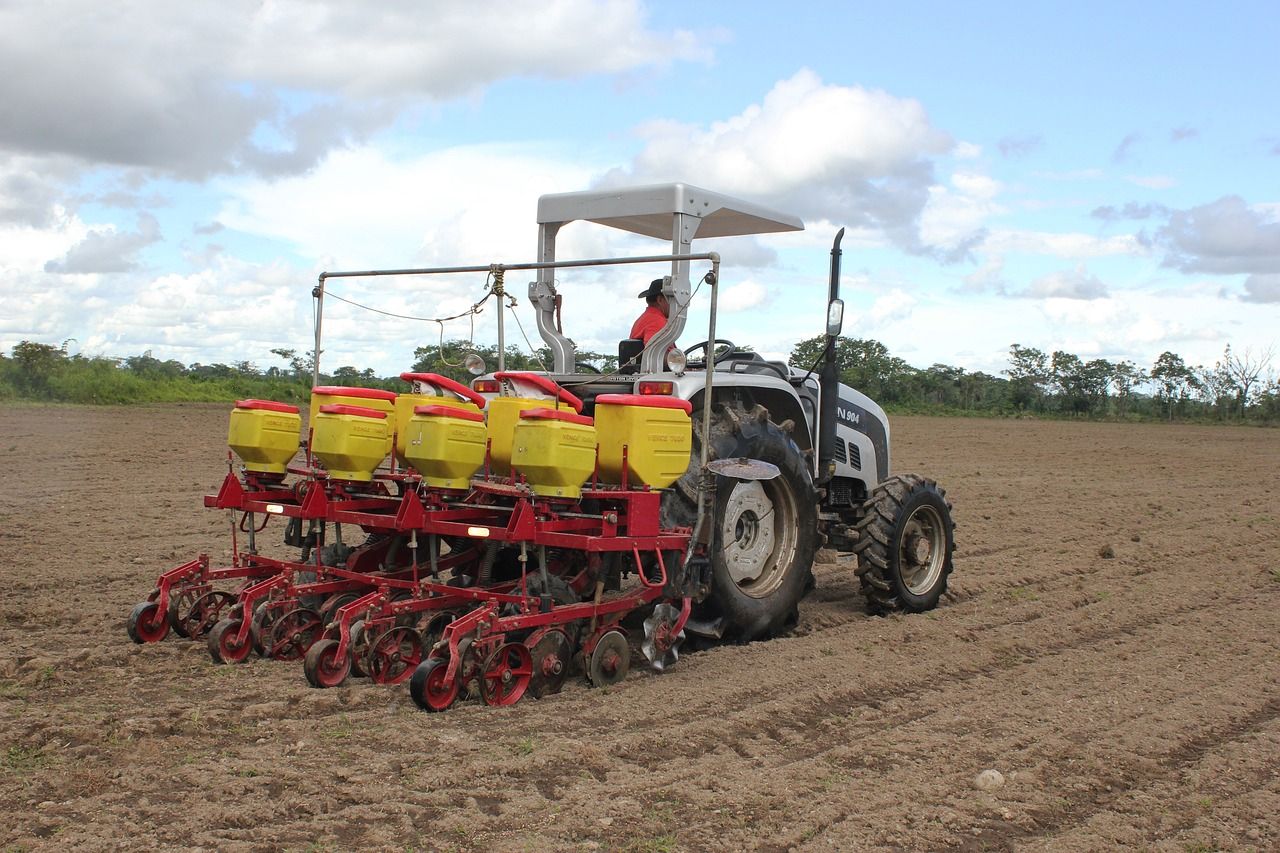
If you’ve planned wisely, you’ll have sold your corn while it was standing in the field, so your next step will be to ship it off to the buyer.
You’ll get the best price for your crop if you can sell it in the springtime rather than waiting until harvest time.
Additionally, if you have to store the corn, it will cost you money, and you run the risk of losing some of your crop to spoilage.
Occasionally, prices will rally in the fall, but this is not a certainty. If something does go awry with your crop or your pre-sale, you can always count on your crop insurance for monetary protection.
No matter when you sell your crop, remember to take all of your costs into account when you set your price.
Average the price you’ve received over the past 3 years and add in a reasonable percentage for inflation.
By pre-selling, you may occasionally miss out on a market rally, but for the most part, you’ll make a good, reliable profit every year.
Frequently Asked Questions
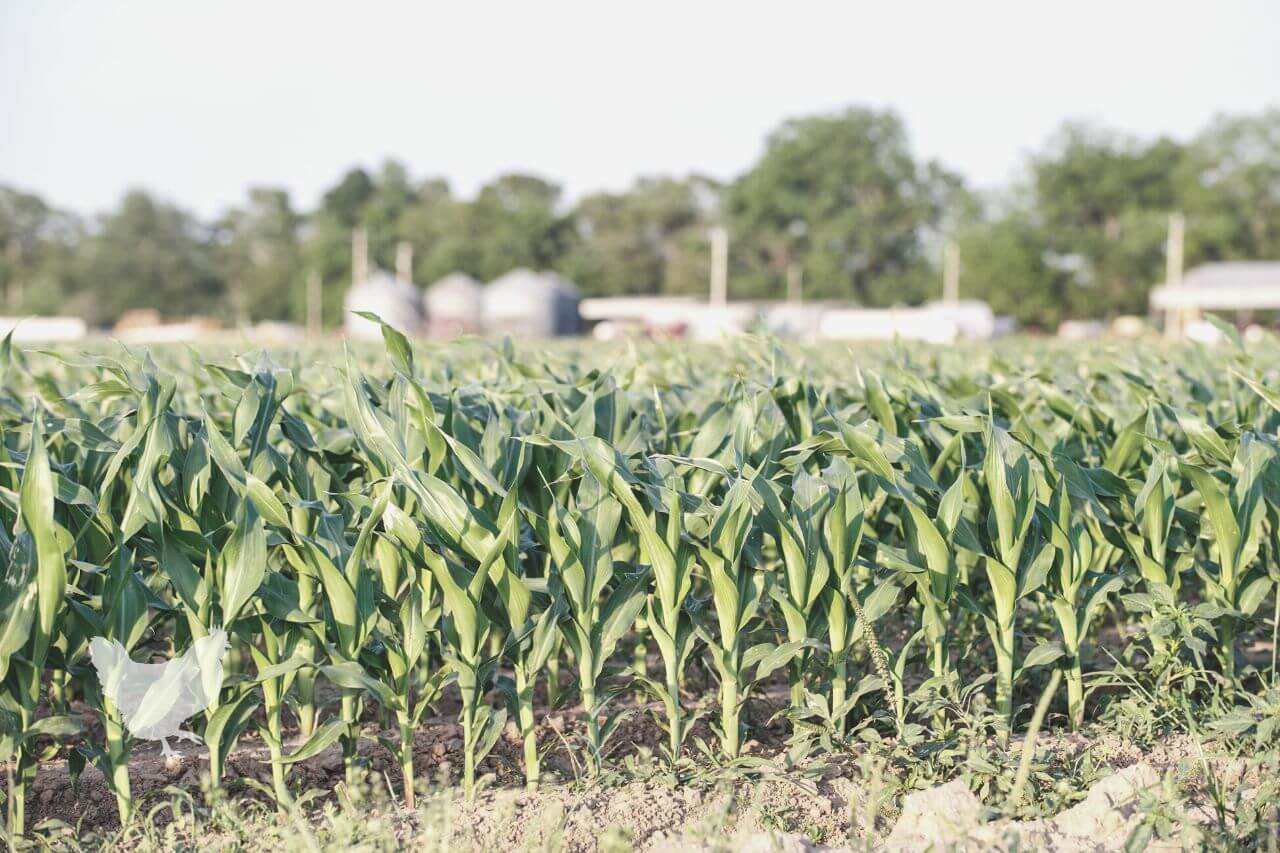
This is a type of corn that has been genetically modified to resist predation by caterpillars.
Bt is the abbreviation for Bacillus thuringiensis, a type of bacteria that is deadly to caterpillars but mostly harmless to other types of insects and creatures. Proteins produced by Bt corn are fatal to caterpillars in the order, Lepidoptera.
Bt works by causing the innards of caterpillars to explode after they eat treated foliage. The only contact Monarch butterflies might have with corn would involve gathering small amounts of pollen. They do not lay their eggs on corn crops, and Monarch caterpillars do not eat corn plants. Any risk potentially posed to Monarch butterflies would be minimal. Bt corn poses no risk to Monarch caterpillars.
Bt used as a pest control method and genetically modified Bt corn ward off the devastating damage that caterpillars can wreak on corn and other crops. Because this bacteria is only deadly to caterpillars, large stands of Bt corn can grow free of caterpillar predation while posing little or no threat to beneficial insects and other fauna. Planting Bt corn is far better for the environment, wildlife and consumers than planting corn that must be treated with pesticides to prevent insect predation.
Bt has been used to control caterpillars for over 50 years. In that time, huge amounts of anecdotal evidence coupled with formal studies have shown that Bt is only harmful to caterpillars and similar creatures (e.g. grubs). Using Bt as a pest control product or planting crops that have been modified to deliver Bt to target insects helps farmers produce larger crops while posing little or no threat to people, pets, livestock, wildlife, birds and fish. Bt corn cannot pollute the air or water.
Other Resources
- Some interesting ideas on what other food goes well with corn on the cob
- Pros and cons of high fructose corn syrup
- Tips how to make your own corn flour
Very information and detailed guide. Thank you a lot for your effort.
Thanks for the resources!